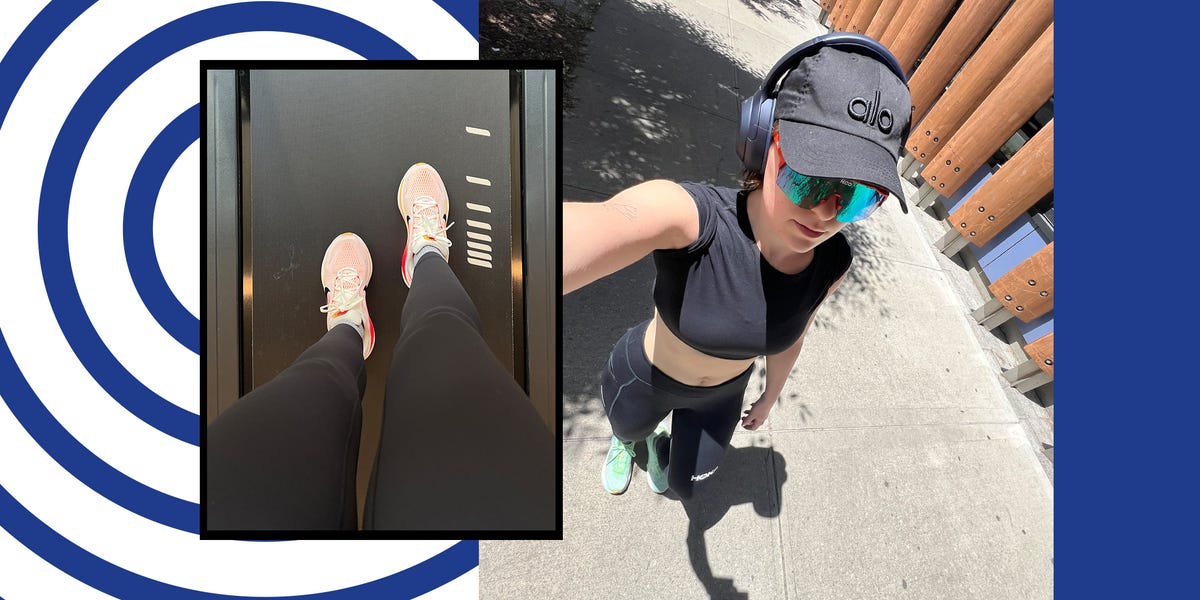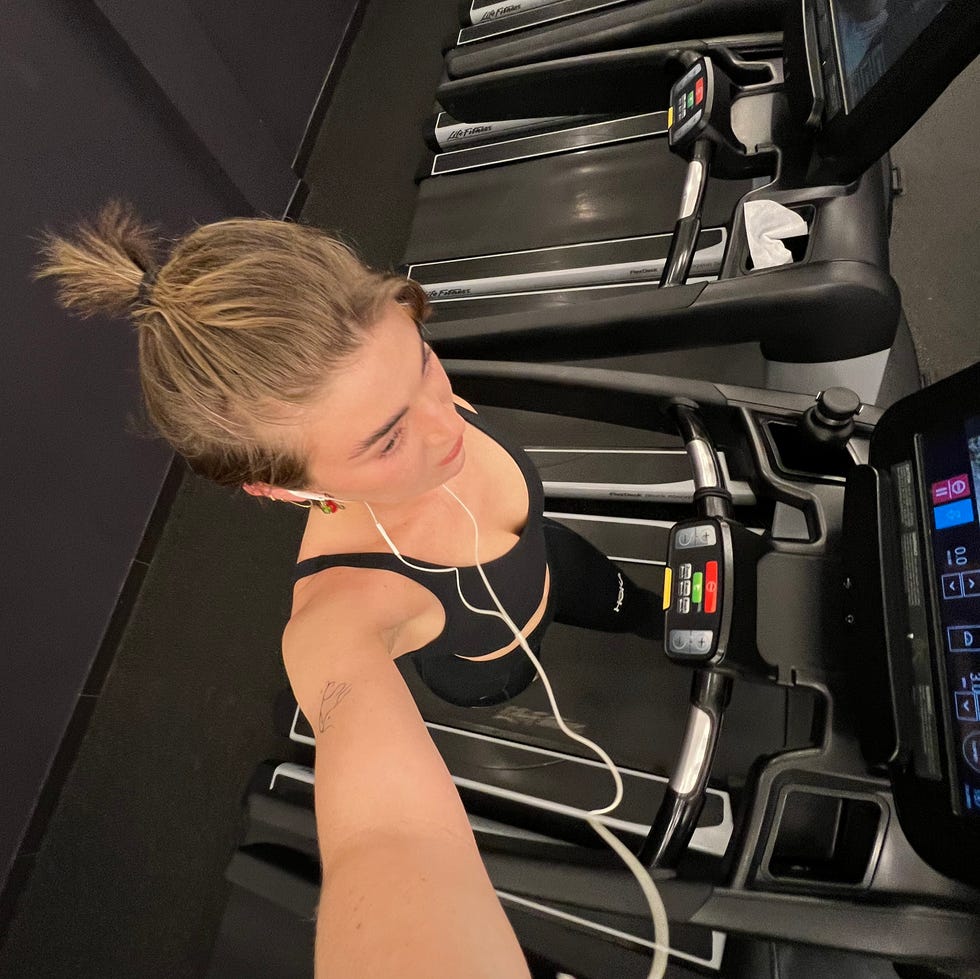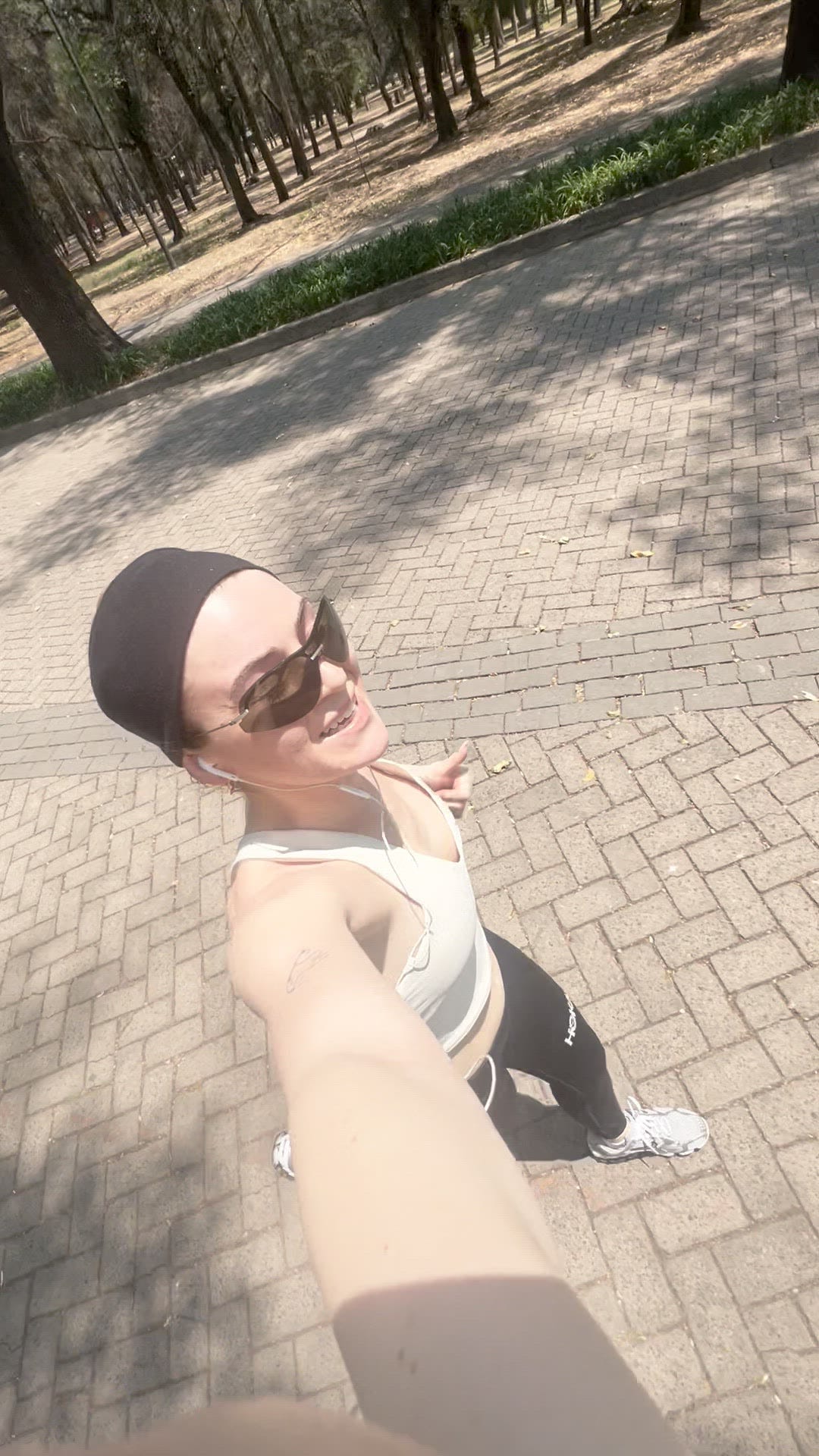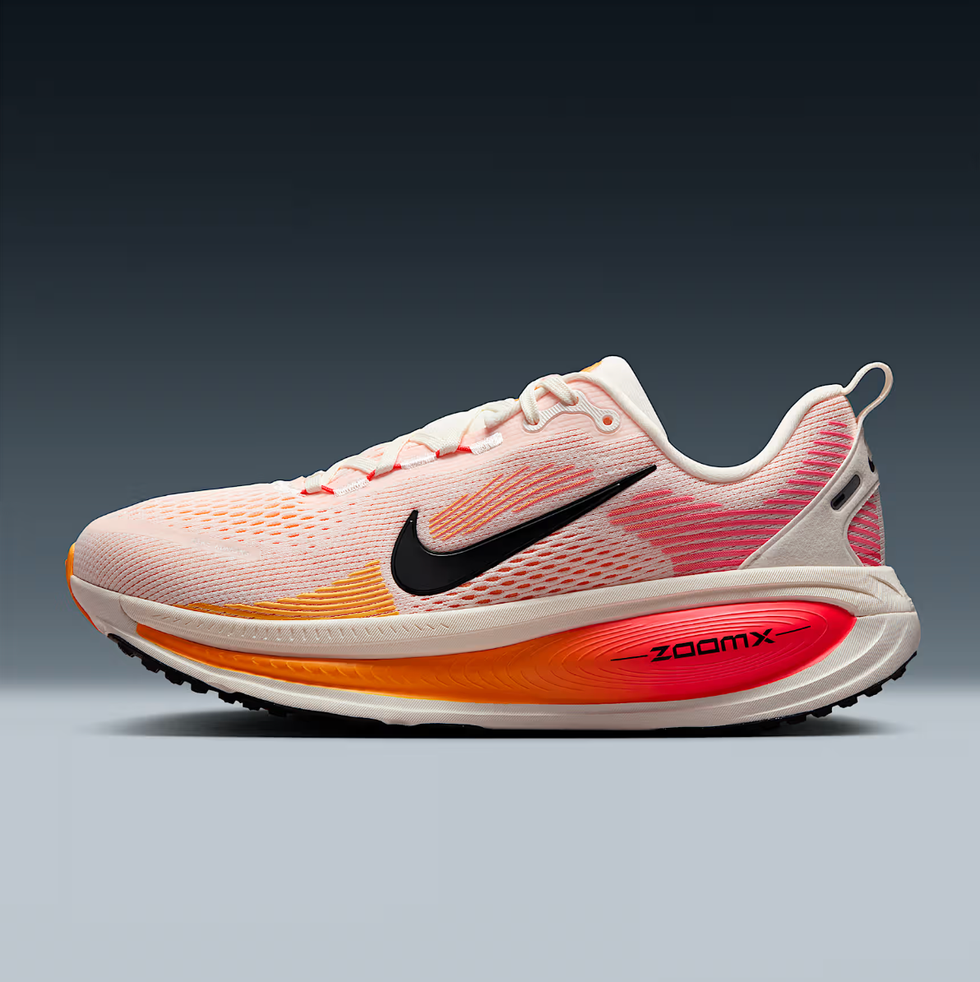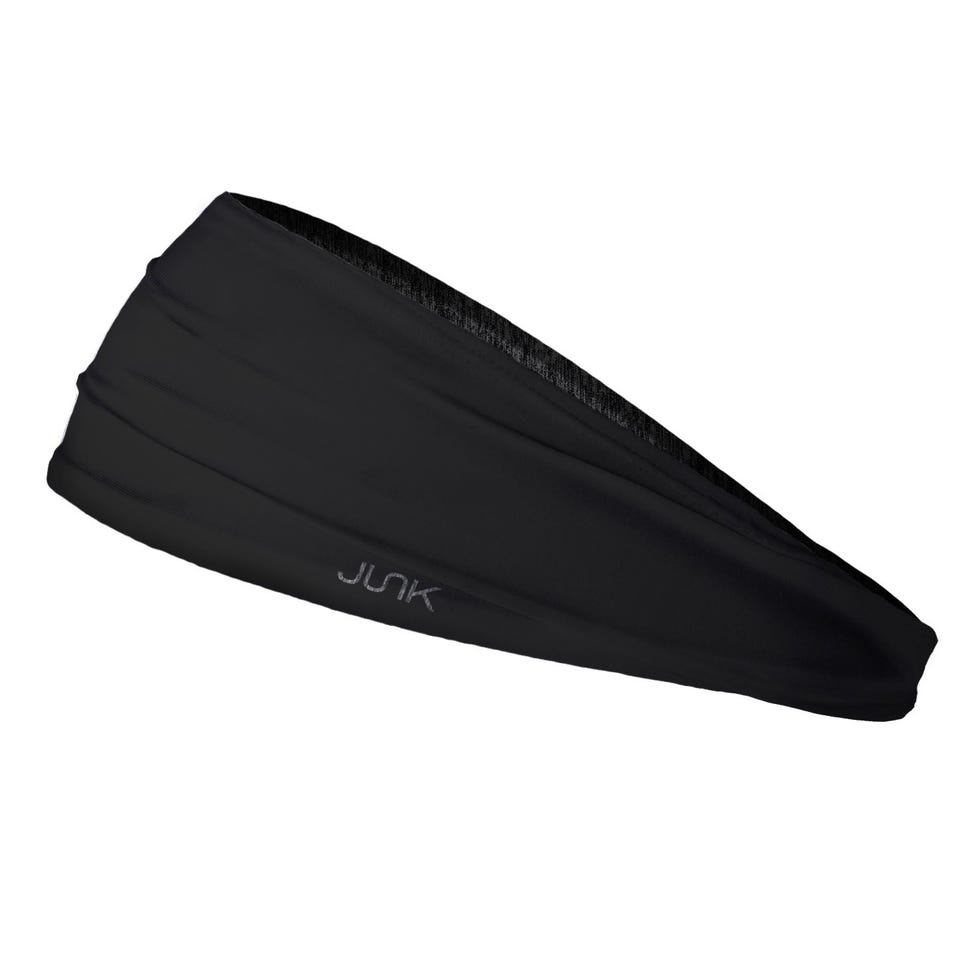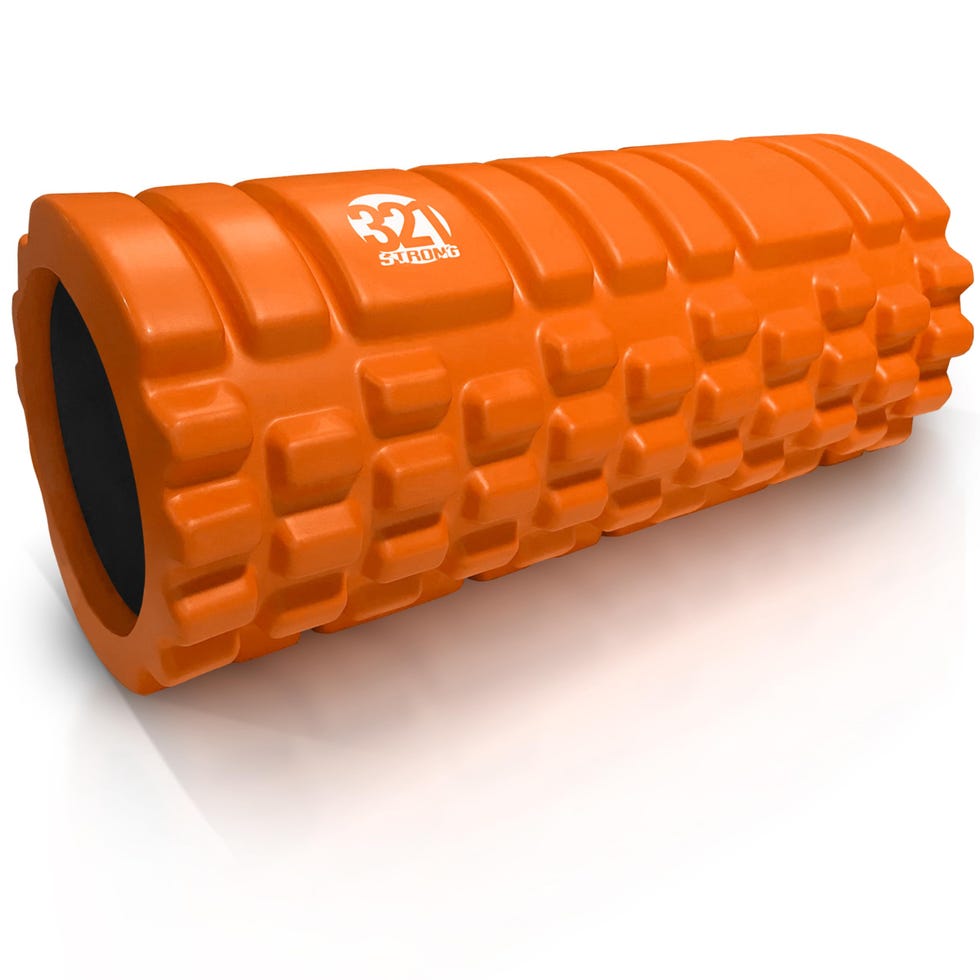There’s something romantic about the idea of a daily run. It’s simple. It’s gritty. It’s giving “I can do hard things just because I believe I can,” main character energy. Plus, running three miles a day has become a bit of a fitness trend lately—just scroll through TikTok and you’ll see thousands of people sticking to that sweet-spot distance to get in shape, clear their heads, or just establish a healthy daily habit.
I’ve dabbled in running over the years (mostly during half-hearted attempts to train for a 10K or half marathon), but I’ve never been consistent. So I challenged myself: Run (at least) three miles a day, every day, for three weeks—no skips. I wanted to see if this simple habit could actually deliver real results: Physically. Mentally. Emotionally. To cut to the chase, it did.
But before we dive into exactly what I learned, here’s what the challenge I set out for actually entailed: Each day, I carved out 30-ish minutes to run a minimum of three miles—sometimes on the treadmill, sometimes outside, depending on my mood (and the weather). Sometimes fast, sometimes slow—I wasn’t chasing speed, just consistency.
And while it started out as a little personal experiment, it turned into a full-on mindset shift that seeped into other areas of my life.
The 6 Biggest Benefits I Noticed From Running Three Miles A Day
1. I slept like a baby.
I’m a pretty high-energy person, even on little sleep. And frankly, when I’m not exerting that physical energy enough during the day, I find it tough to settle down to sleep at night.
By week two of this challenge, I was zonking out faster than usual and waking up feeling more rested. Research backs this up—moderate aerobic exercise like running can help you fall asleep quicker and improve sleep quality, per the American Journal of Lifestyle Medicine.
2. My stressors felt more manageable.
There’s a reason running is considered a moving meditation (and I say this as someone who really struggles with stationary meditating). That ~30-minute mental break from work, life, communications, etc., helped me carve out time to shut off my brain and come back to reality with a fresh outlook.
Whatever I was stressing about before my run felt way less burdensome after taking time to move my body and just, well, not stress over that thing. I’d come back with more patience, more solutions, and frankly, a more can-do attitude about dealing with whatever was weighing me down before. My run became my reset button—and a way to make myself less irritable and more focused.
3. My legs felt noticeably stronger.
I’ve always gained (and lost) muscle pretty quickly after starting or stopping a new exercise routine, however I typically first notice it around my abs and arms, as I’m leaner in those regions. So, when I saw my calves and quads popping a bit more in the mirror, and climbing the four flights of stairs up to my apartment started feeling easier than it used to, I knew my body was adapting. Even though I wasn’t lifting weights during this three week challenge (I tried to at first, but decided it was too much for my schedule while also running three miles daily), the repeated use of lower-body muscles while running led to strength gains.
Going into this challenge, I expected a mental impact of some sort (though I wasn’t quite sure what it would be), but I didn’t think my body would change much from a short-distance, short-term running habit. I already work out often (switching it up with two to three weekly strength training sessions, yoga/pilates once per week, and a two to five mile run once per week), so I didn’t think this challenge would have a palpable physical effect on me. So, the lower body muscle and strength gains were by far the most surprising benefit I walked away with.
4. I finally found rhythm (and confidence) in my stride.
I’d never really consider myself a “runner,” but doing it daily for three weeks made the act feel less intimidating and more second nature to me. A study in Psychology of Sport and Exercise shows that consistency in movement creates more positive attitudes toward the habit, which makes you more likely to keep showing up. My experience totally backed that up.
Around day six, I felt myself gearing up for my run more instinctually—getting dressed, grabbing my headphones, keys, and lacing up my sneakers just right without having to think about it much. If on the first few runs I was moseying around the neighborhood walking for several blocks to put off actually starting the run, by week two I was excitedly hitting the pavement at my three-mile pace almost as soon as I got outside. Pacing myself began to feel more natural without checking my Nike Run Club app, and I started tapping into the sound of my feet hitting the concrete to gauge my effort.
5. My self-talk shifted from, “Yikes, I can’t wait until this is over,” to, “Wow, you’re so capable of doing hard things.”
Before this challenge, I had a habit of engaging in pretty critical self-talk on the regular. Also, mentally checking out mid-run was the norm in order to just get through it. My internal monologue when running used to be all about how much time was left, how uncomfortable I felt, or how nice it would feel to just stop. But sticking to a daily running habit triggered the kind of awareness and shift of self-talk that I’d been long overdue for. That mindset shift was probably the biggest win of all.
After a few days of three miles under my belt, I started celebrating tiny wins—like not stopping on a hill or picking up my pace on the final stretch. Instead of counting down the minutes or fixating on how slow I was moving, I was hyping myself up, which only propelled me further. Whether it was a solo sunset jog or a playlist-powered treadmill sesh, I always felt a little lighter—and a little more capable of not just enduring, but thriving through hard things—post-run. That energy and positive shift in self-talk started showing up in how I talked to myself outside of workouts, too.
6. I started craving healthier habits.
It’s wild how one habit tends to have a domino effect, whether it’s constructive or destructive. Once I started running every day, I realized I wanted to support that effort outside of my run window. That meant reaching for water instead of a second coffee, getting in some light stretching at night, prioritizing protein in my meals, and actually winding down for sleep earlier than usual instead of binge-watching or doom-scrolling.
The momentum from running made other wellness choices feel less like chores and more like natural choices for self-care. I wasn’t trying to overhaul my entire routine overnight, but these little tweaks felt pretty intuitive, and really added up to help me stick with the challenge, and feel more energized and clear-headed throughout the day.
How I Started Running Three Miles A Day (And How You Can Too)
Okay, so full transparency: I didn’t just wake up one day and bust out 21 straight three-milers. I eased in by starting off slow to establish a new routine, and listening to my body along the way. Here’s how to start running three miles a day—without burning out.
- Week 1: Run/jog intervals. I used a 3:1 ratio—three minutes of running, one minute of light jogging—for 30 minutes. This helped my body (and brain) get used to moving daily. I still consider myself a beginner runner, but if this starting point feels lofty for you, swap a minute of light jogging for a minute of walking.
- Week 2: Jog three miles, but slowwwww down. I didn’t worry about pace—just distance. I tried not to stop or walk until I hit three miles for the purpose of this challenge, but I slowed down even more when I needed to.
- Week 3: Run the full three miles without stopping. (Like actually run, but stay chill about it.) I made it a goal—not a rule—to try to run at a pace of 10-minutes per mile or faster, and I ended up averaging about 9:28/mile without even noticing.
Pro tip: “If you’re just starting out, alternate running days with walking or strength training to let your body adjust,” run coach Corky Corkum, CPT, previously told WH. “The number one reason new runners quit is injury or burnout from doing too much too soon.”
Common Roadblocks (And How I Got Through Them)
- Low motivation: Some mornings I woke up with zero desire to move. Solution? I laid out cute running gear I felt good in the night before, so my brain didn’t even have the time to protest in the morning. I also promised myself I could stop after five minutes if it didn’t feel good, but I never did.
- Bad weather: Rain, wind, and chilly temps were real. That’s when I’d hop on a treadmill at the gym or office. Having a plan B helped me stay consistent when I just did not feel like being outside.
- Time constraints: Three miles took me about 25 to 35 minutes on average, depending on pace. That’s less time than I usually spend scrolling Instagram before bed, less time than I take to answer emails in the morning (usually my first task of the day post-coffee), and less time than it takes me to get ready for work in the morning. My point is, it’s not a long time. Running first thing in the morning gave me a little mental win to ride out the rest of the day, and left no room for blowing off my goal after a busy day.
Pro Tips For Making The Habit Stick
Want to try running three miles a day for yourself? These things made all the difference:
- Good gear matters. Don’t skimp on running shoes you feel good in. Your knees will thank you. (Check out our top picks below!)
- Mix up your route. A change of scenery can breathe new life into your run. After a few runs on the same route, I found myself growing less motivated for the adventure, so I switched things up.
- Track your progress. I used the Nike Run Club app to log my miles. Seeing the little wins stack up and viewing my consistency on the screen felt motivating.
- Recovery is key. Stretching, foam rolling, sleep, hydration, nutrition—don’t skip ‘em. ‘Nuf said.
- Rest when you need it. Running every single day isn’t for everyone—in fact, it’s not even a habit I’m planning to stick with—and that’s okay. Corkum says even just four runs a week can deliver major benefits.
So…Is Running Three Miles A Day Worth It?
If your goal is to feel stronger, sleep better, and just feel a little more capable and confident—all with minimal equipment or cost—then yes, 100 percent. You don’t need a marathon medal to call yourself a runner or to be consistent. You just need a pair of sneakers, a bit of stick-to-it-ness, and a willingness to start where you are.
And if you happen to find yourself romanticizing the idea of making a daily jog a habit? I say lean into it.
Shop My Running Gear Essentials
These were the products I found myself consistently reaching for throughout my three week running challenge.
Meet the expert: Coach Corky, CPT, is a New York City-based walking and running coach and personal trainer with certifications from USA Track & Field (USTAF) and Road Runners Club of America (RRCA).
Talene Appleton is the fitness editor at Women’s Health, where she nerds out over all things fitness, nutrition, and wellness. She was previously the fitness and commerce editor at Men’s Health, where she tested and reported on the newest, buzziest fitness and wellness products to hit the market. As a NASM-certified personal trainer and Precision Nutrition-certified nutrition coach, she is passionate about supporting women at the intersections of fitness, food, and community. Talene was on the George Washington University college dance team (shout out First Ladies) before moving on to become an NBA dancer for the Washington Wizards—you can still catch her at dance classes across New York and LA in her free time. Before entering journalism full-time, Talene was a private chef for four years and still enjoys cooking for and hosting friends and family regularly.
Read the full article here


